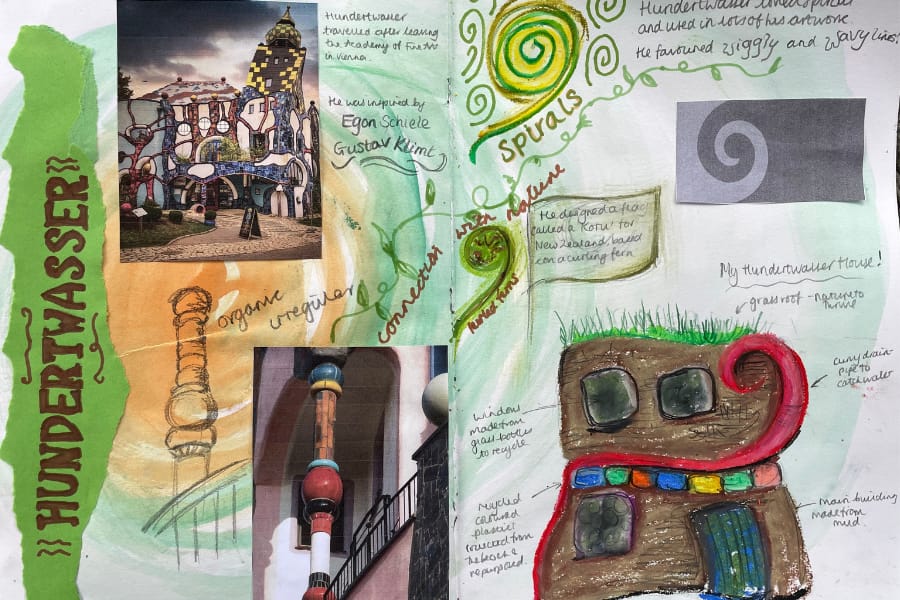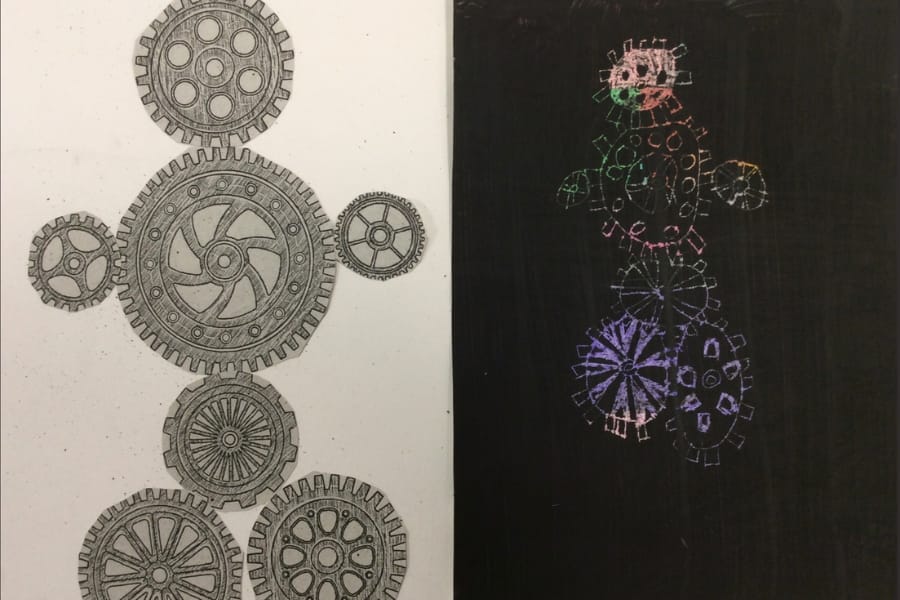Fun And Engaging Art Club Ideas For Primary Schools
Written by Kapow Primary
Published on 17th October 2019
Last Updated: 21st June 2024
Written by Kapow Primary
Published on 17th October 2019
Last Updated: 21st June 2024

Are you an art subject leader and thinking of running an after-school or lunchtime art club and in need of art club ideas? Or are you taking over an established club and looking for new ideas?
Giving children extra opportunities to explore, engage in and enjoy creative activities is incredibly rewarding, but finding time to organise and think of activities is hard for busy teachers.
Don’t worry! We have you covered! We’ve come up with a range of ideas for primary school art clubs that are a) manageable and b) enjoyable for all.
It would be great for children to have an art club sketchbook, so they have a personal space to try things out, explore new materials and collect ideas. Or, even better, get the children to make their own sketchbooks. Our sketchbook webinar explains practical ways to personalise purchased books and suggests ways to make sketchbooks with interesting paper.
Create a whole club mural where everyone paints a small part of a large picture. Printable sheets can be found online featuring famous paintings split into squares for you to use. Or make your own, perhaps using a theme such as a special event or celebrating something about your school. Draw your design as large as you want the finished piece, then cut it into squares for each child to paint.
Share a picture of an artist. The Tate Gallery website and Google Arts and Culture are reliable sources. Complete a research project about that artist, discovering their life, work, inspiration and style. Either individually or as a club, create interesting research pages that include drawing and painting. Examples can be found in these Kapow Primary art lessons: Friedensreich Hundertwasser and Fiona Rae. Each child can create their own piece of art inspired by that artist’s work and medium.

Children love to create characters or draw pictures for stories. Make simple folded-paper comic books, or use this Kapow art lesson, which shows you how to make concertina books. Children can illustrate a story of their own or one they already know.
Decorate a T-shirt or plain canvas bag using fabric pens, embroidery, or tie dye, or try glue batik! Allow the children to take ownership of their design or, alternatively, give them a theme or special occasion as inspiration for creating a design.
Next time you’re at a pebbly beach, collect a bag of smooth, rounded rocks. Turn them into animals; paint with an affirmation message; or decorate with intricate mandala-style patterns or a simple scene. Acrylic paints work well; try a paint pen such as Posca for more intricate designs. Use varnish to protect the painting if you want to use them outside to brighten playground spaces.
A fun way to practise drawing and mark-making skills, children scratch away a painted black surface to reveal bright colours underneath. Use this wax resist lesson to help with the process. Try adapting it by using oil pastels to decorate paper plates with lots of colour in different patterns. Cover with a layer of ready-mix black paint. When dry, scratch off the black paint in beautiful mandala patterns with something like a cocktail stick or plastic knitting needle.

This example of work is special thanks to St Edmund’s RC Primary School in Salford!
Use iPads or school cameras and give children a stimulus – for example, ‘The beauty around us’ or ‘The natural world’ – to get them going! Give them free rein to explore the theme, trying different angles, effects and props. Look at our photography lesson inspired by Derrick O Boateng and find ways to edit photography so you can create art pieces in their own right.
Origami offers many possibilities, and there are a wide selection of online tutorials to help. You can make fun shapes to create animals, bookmarks or pretty decorations. Our Christmas Craft Along webinar includes a section on origami, teaching you how to make three simple shapes that can be used to make decorations.
Or explore more meaningful origami and share the story of Sadako and her wish to make a thousand origami cranes after the atomic bombing of Hiroshima. There is now a statue in Japan called the Children’s Peace Monument, inspired by her efforts. Challenge the children to learn how to make cranes, and display them as a symbolic sculpture in school.
Yarn crafts have so many possibilities. Wrapping is an easy way to start working with yarn. Wrap cardboard shapes to make decorations, or wrap lollipop sticks as a stem for a flower, or do some research on how to make ‘God’s eyes’ that originate from Mexico.
Weaving will require some form of a loom. These can be made from sticks, flat cardboard sheets, paper plates, drinking straws, or by making a box loom. Experiment with different materials you can use for weaving; it doesn’t have to be just yarn. Make wall hangings, bookmarks or some installation art, and decorate a boring wire fence by using that as a giant loom!
This is always a great stimulus for artwork. Choose a country to research and look at the types and styles of art produced there; the children could be involved in this. Ask them to come up with the country’s traditional art.
Seasonal events across the year provide lots of crafting opportunities, such as Christmas tree decorations, Easter baskets, bonfire night rockets and Diwali lanterns, to name just a few. Look at our ‘Christmas Craft Along’ webinar with ideas for engaging Christmas crafts. Our EYFS seasonal craft unit is another source for projects that could be adapted to suit any age.
For more ideas, why not check out our primary Art scheme of work. From EYFS through to Y6, we have lots of brilliant art ideas for all ages. Complete with curriculum links to help make your art club relevant, resources and inspirational ideas for all age groups, Kapow Primary has you covered!